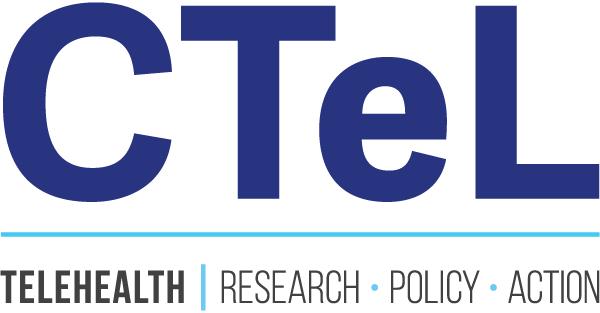Navigating Hurricanes with Telehealth: Lifesaving Care and Mental Health Support in Times of Crisis
As communities across the country brace for the impacts of Hurricane Milton, one of the most significant concerns remains ensuring that patients can access vital healthcare services, particularly during and after catastrophic events. Hurricanes and torrential storms leave widespread damage, disrupting power and communication lines, destroying infrastructure, and limiting physical access to healthcare facilities. For many individuals, especially those managing chronic conditions or mental health needs, this disruption can have serious consequences.
In the face of these challenges, telehealth has emerged as a critical tool in maintaining access to healthcare, even when patients are unable to visit a healthcare provider physically. This is particularly true in the realm of mental health care, where continued access to therapeutic services, support, and even medications can be lifesaving.
How Hurricanes Disrupt Access to Healthcare
Natural disasters like Hurricane Milton can decimate entire communities, leaving hospitals, clinics, and healthcare providers overwhelmed or inaccessible. Physical displacement from homes, evacuation orders, and power outages all create barriers for patients needing regular healthcare services. This is especially dire for those relying on medications to manage mental health conditions like anxiety, depression, PTSD, and substance use disorders.
A hurricane magnifies these issues tenfold for those already struggling with access to care in rural or underserved areas. The emotional toll of a natural disaster can exacerbate mental health conditions and increase the demand for mental health services at a time when local healthcare systems are least equipped to handle it.
The Role of Telehealth in Disaster Recovery
Telehealth provides an invaluable alternative, allowing patients to stay connected with their healthcare providers when in-person visits aren’t possible. With the use of mobile devices, internet access, and telehealth platforms, physicians can provide remote consultations, monitor symptoms, prescribe medications, and offer mental health support. This is essential when weather-related disasters cut off physical access to clinics and hospitals.
Mental health care via telehealth has been particularly transformative. Research has shown that telehealth for mental health not only increases access to services but also improves patient outcomes. During a natural disaster, this continued care can be critical for patients experiencing heightened stress, trauma, or worsening mental health conditions. According to the National Institute of Mental Health (NIMH), approximately 17 million adults in the U.S. experience major depression, and natural disasters can exacerbate these and other mental health conditions.
“According to the National Institute of Mental Health (NIMH), approximately 17 million adults in the U.S. experience major depression, and natural disasters can exacerbate these and other mental health conditions.”
Telehealth’s Vital Role in Post-Disaster Mental Health
In the aftermath of Hurricane Milton and other storms, telehealth platforms will help bridge the gap for those needing immediate mental health support, particularly in hard-hit areas. For many people, the sense of isolation and loss brought on by the disaster triggers anxiety and depressive symptoms. Telehealth allows mental health professionals to provide immediate interventions, helping patients process trauma and offering therapeutic techniques to manage their stress.
Telemedicine also played a crucial role in facilitating the prescription and management of medications like antidepressants, anxiolytics, and buprenorphine, a drug used to treat opioid use disorder. The flexibility of telehealth enables patients to continue receiving these life-saving medications, which can prevent withdrawal symptoms, mental health crises, and further strain on already overwhelmed healthcare systems.
The Path Forward: Strengthening Telehealth in Disaster Preparedness
As climate change leads to more frequent and severe natural disasters, policymakers need to recognize the vital role telehealth plays in disaster preparedness and response. Ensuring that telehealth services, particularly for mental health, remain accessible and fully supported before, during, and after natural disasters should be a priority.
Investments in telehealth infrastructure—such as expanding broadband access in rural areas and supporting mobile health units—are necessary to prevent gaps in care. Moreover, regulatory flexibilities introduced during the COVID-19 pandemic, which allow for the remote prescribing of controlled substances, should be extended to maintain continuity of care during emergencies like hurricanes.
Telehealth has become a powerful lifeline in the face of natural disasters, enabling ongoing access to healthcare and mental health services for those affected. Hurricanes like Milton serve as stark reminders of the vulnerabilities in our healthcare system and the importance of digital solutions to overcome them. As we continue to confront the challenges posed by both natural disasters and the ongoing mental health crisis, telehealth stands as a beacon of hope and resilience for patients and providers alike.
By expanding access to remote healthcare services, especially in the field of mental health, we can mitigate the devastating impacts of disasters and ensure that no one is left without the care they need.
References:
National Institute of Mental Health. (n.d.). Mental Health Information. https://www.nimh.nih.gov/health/statistics/major-depression
AMA. (2023). Overdose Epidemic Report. https://www.ama-assn.org/system/files/ama-overdose-epidemic-report.pdf
Centers for Disease Control and Prevention (CDC). (2023). The role of telehealth in disaster recovery and patient care. https://www.cdc.gov/

